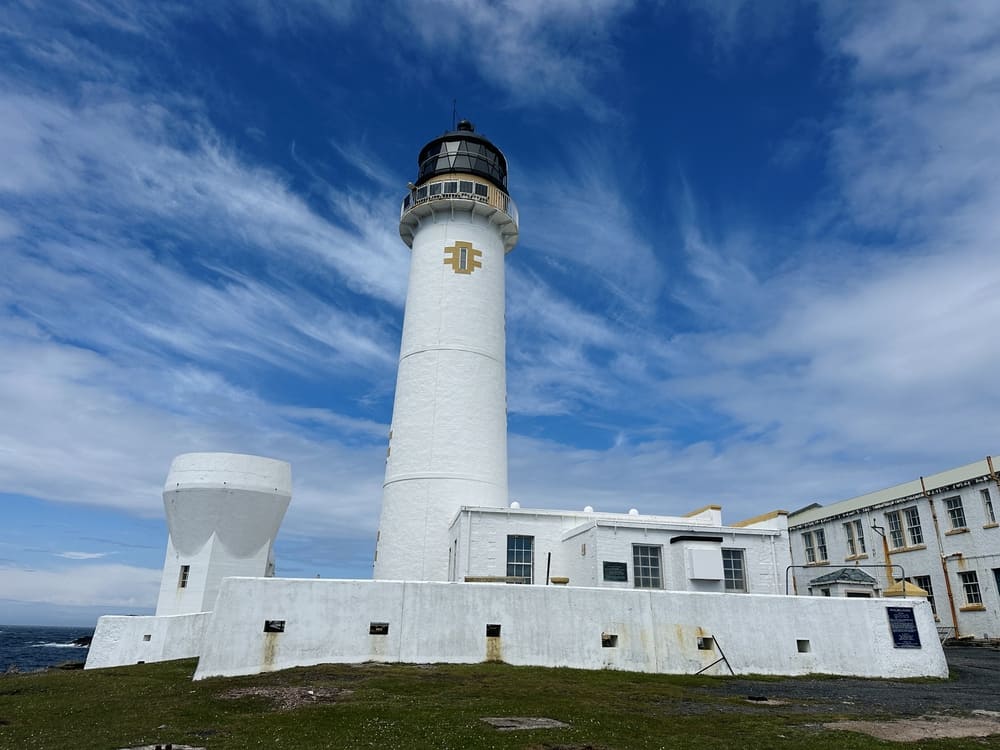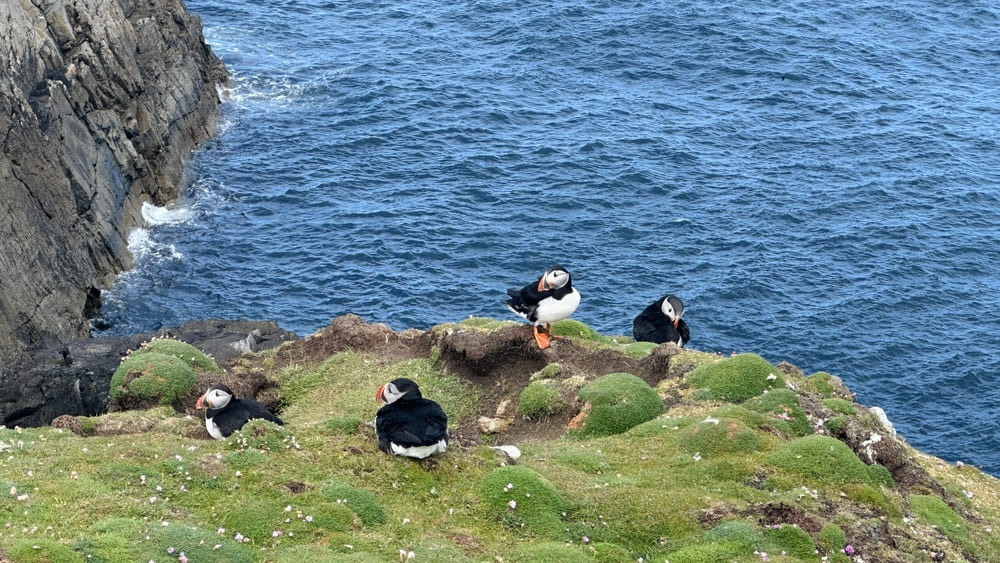Some destinations are hard to reach because of distance. Others, like Fair Isle, are difficult because they are cut off not just by geography, but by limited infrastructure, volatile weather, and a pace of life most of us forgot existed. If you’re interested in isolation with purpose – for birding, for textiles, for raw nature – Fair Isle is worth the effort.
Table of Contents
Where is Fair Isle?
Fair Isle lies 39 km south of the Shetland Mainland, and 43 km north of North Ronaldsay, the northernmost of the Orkney Islands. Administratively, it belongs to the Shetland Islands Council, but culturally and geographically, it stands alone. It’s part of Scotland, but you’d be forgiven for thinking it had more in common with the Faroes.
There are no bridges, no airstrips for large planes, and no regular shipping routes apart from a twice-weekly ferry. Flights from Shetland’s Tingwall Airport use an 8-seat Britten-Norman Islander and only go in good weather. There is only 50 inhabitants, one shop, a post office, and a school (currently with fewer than five pupils). No pubs, no restaurants, and no streetlights.
This is Britain’s most geographically isolated inhabited island, which we visit yearly as part of our Accross the Arctic Circle: Fair Isle, Jan Mayen and Spitsbergen cruise.

A brief history of Fair Isle
Fair Isle’s history is long, harsh, and deeply tied to the sea. Archaeological digs have uncovered Bronze Age burial sites and Iron Age structures like roundhouses and turf-walled buildings, showing human habitation stretching back over 2,000 years.
In the 9th century, Norse settlers arrived, and the island remained under Norwegian control until the Treaty of Perth in 1266, when it formally became part of Scotland. Scandinavian influence lingers in the dialect and place names.
Historically, Fair Isle was a crofting and fishing community, with livelihoods dependent on subsistence farming, seabird hunting, and later knitwear. Life was precarious. In 1588, one of the Spanish Armada’s ships, El Gran Grifón, wrecked on Fair Isle’s west coast. Survivors were taken in by islanders, an early, well-documented instance of hospitality under extreme conditions.
In the 20th century, the population peaked at around 400 but declined rapidly after World War II. Economic realities and isolation led many to leave. Today, the population hovers around 50, supported by seasonal tourism, wool and knitwear sales, and conservation work.
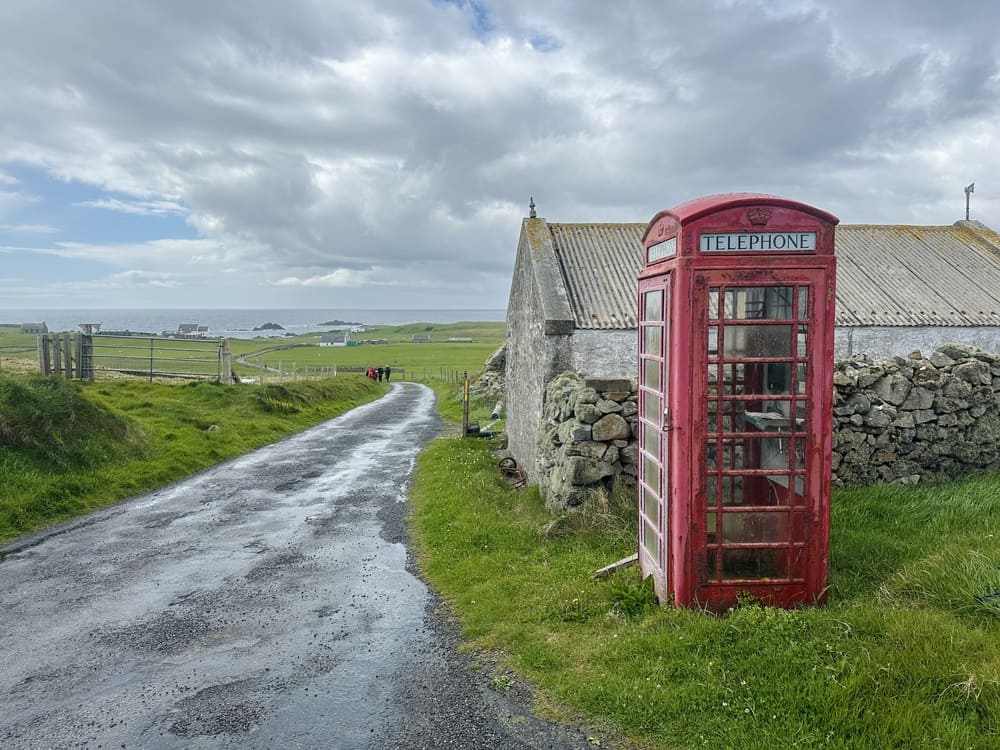
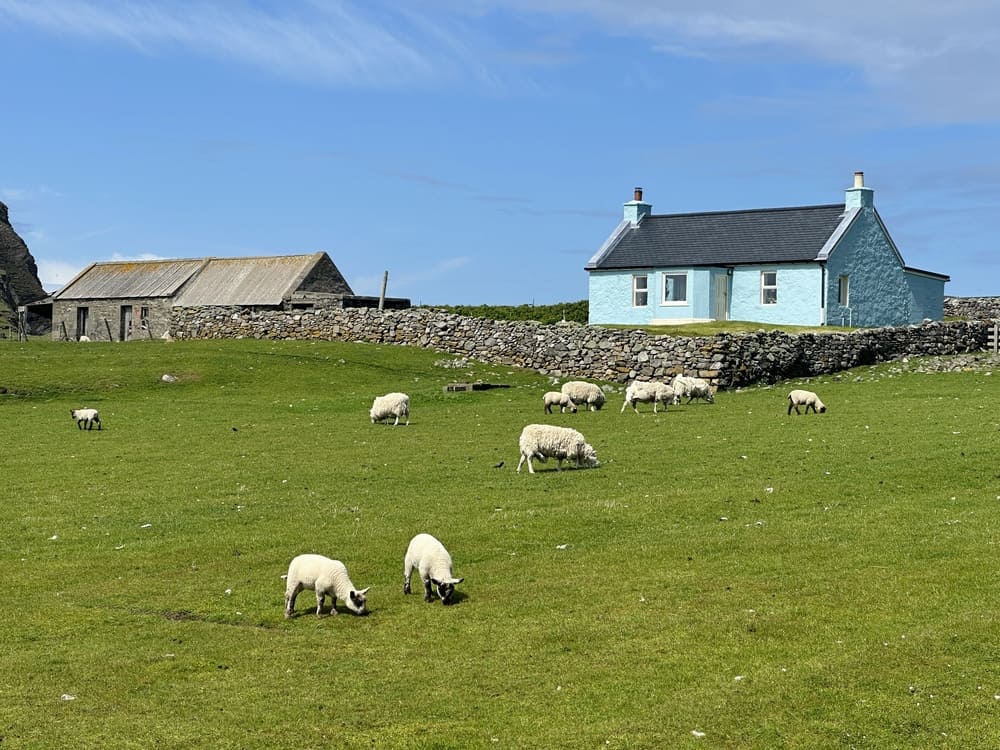
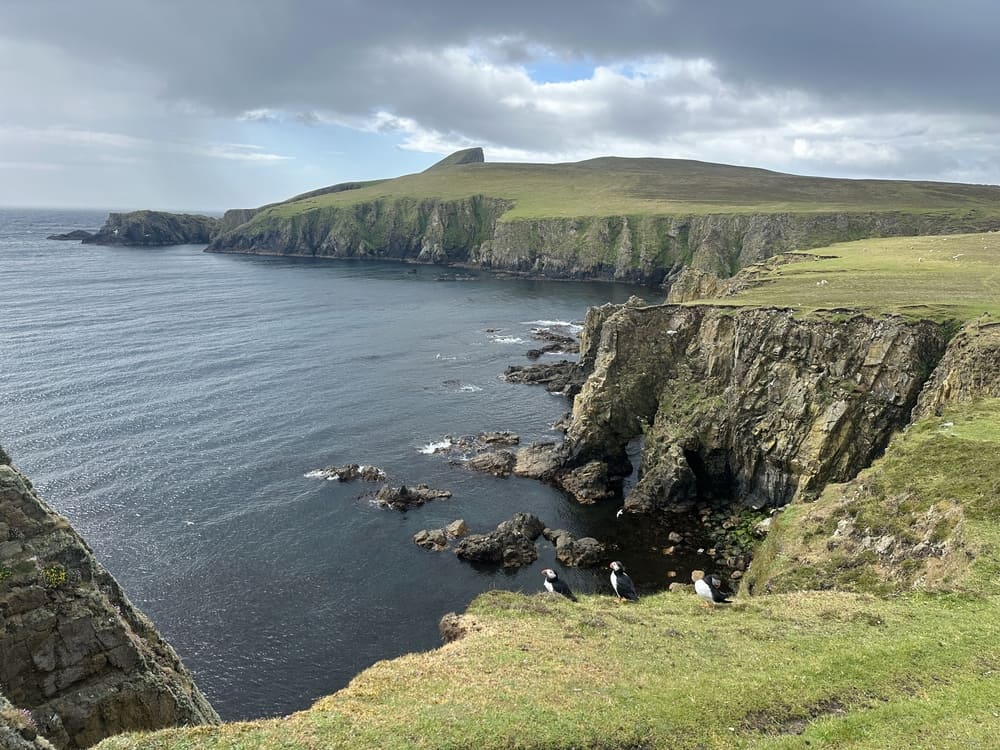
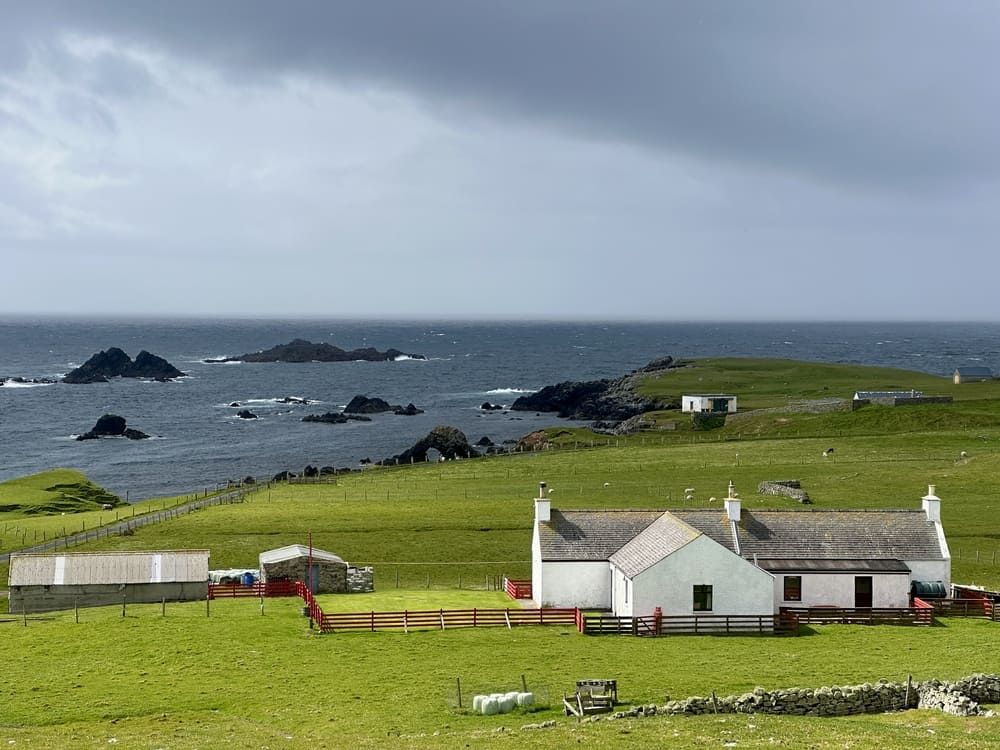
What to do on Fair Isle
Due to its size, Fair Isle doesn’t offer a great deal of activities, unless you’re interested in walking, watching, and listening. Everything is within walking distance, though terrain can be boggy and wind conditions extreme.
Birdwatching
Fair Isle is a world-famous birding destination, especially during spring and autumn migration (April–May and late August–October). Its position in the North Sea makes it a natural stopover for migrating birds.
Fair Isle Bird Observatory (FIBO), rebuilt in 2024 after the 2019 fire, is the scientific heart of the island. Resident ornithologists record daily sightings and welcome visitors to participate in walks, talks, and spotting sessions. Over 350 species have been recorded, including red-backed shrikes, Lapland buntings, and rare North American vagrants blown off course.
Summer is the time for seabirds: puffins, razorbills, gannets, and fulmars nest on the island’s sea cliffs. The puffins are best seen between mid-May and late July.
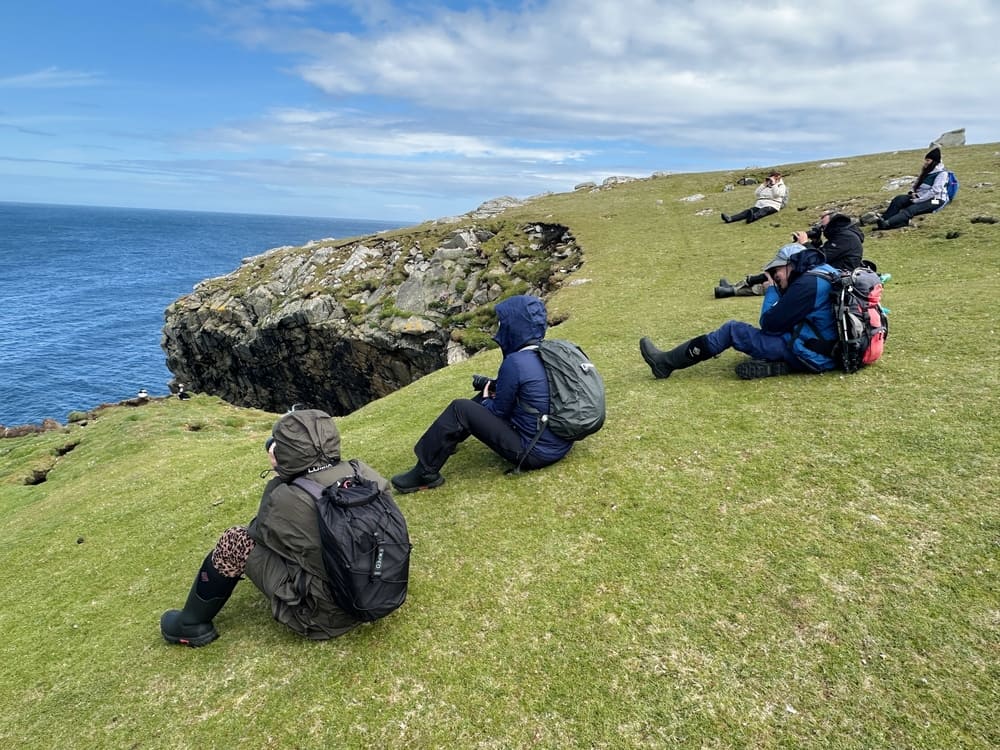
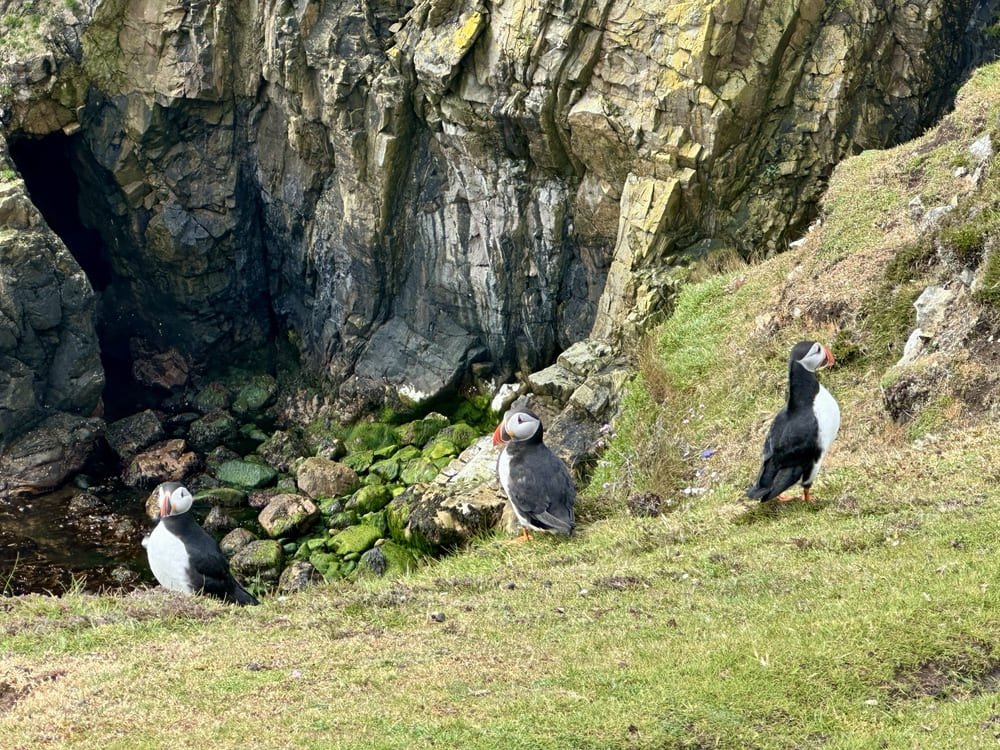
Visit the Fair Isle Textile Producers
Fair Isle knitting is world-renowned. The term “Fair Isle” refers not just to the island but to a specific stranded colourwork technique developed here in the 19th century.
Visit local knitters such as Hollie Shaw at Fair Isle Made, who creates traditional and contemporary designs.
You can also opt for a knitting holiday with Marie, a French girl who moved to Fair Isle eight years ago to pursue her passion of knitting and now offers individually tailored, week-long knitting holidays.
The George Waterston Memorial Centre & Museum documents the island’s social and knitting history, including looms, pattern books, and wartime survival stories.

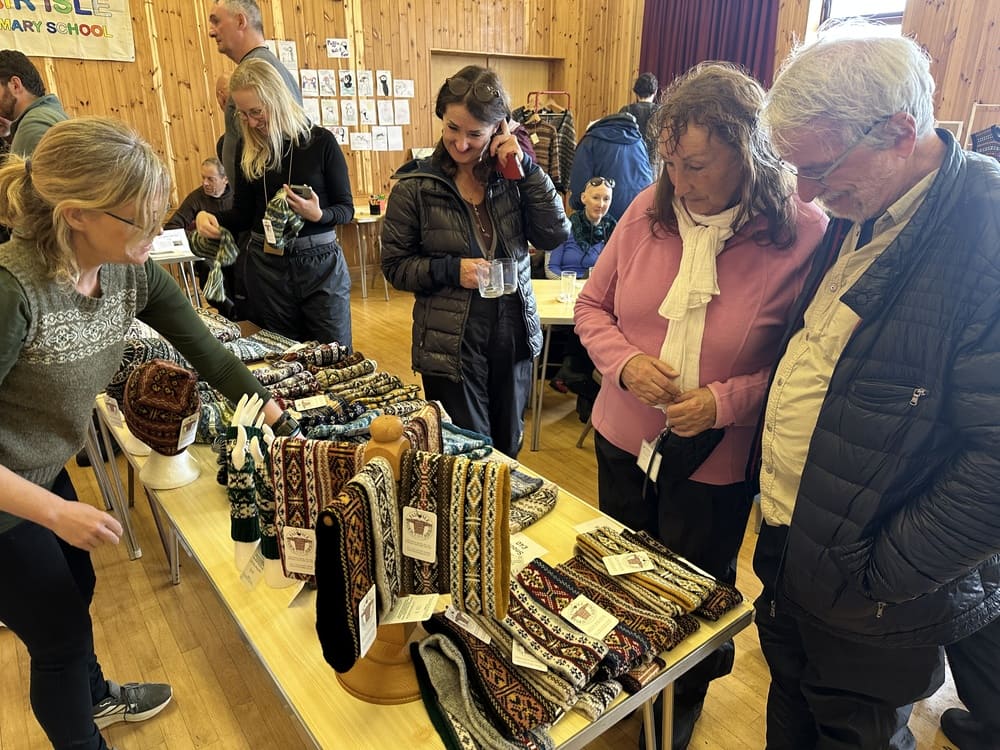
Coastal Hiking and Clifftop Walks
Fair Isle’s coastline is both dramatic and dangerous. Paths are informal, often sheep tracks across wet, uneven ground. Walking around, you can’t miss:
– the North Lighthouse: Built in 1892, it’s unmanned today but accessible via a 90-minute round-trip walk from the observatory
– the South Lighthouse: Constructed in 1891, it’s the more accessible of the two and adjacent to a guesthouse.
– the Sheep Rock: A sea stack that appears to rear out of the sea, historically used for grazing. Not accessible without climbing gear.
– the Ward Hill: At 217 metres, it’s the island’s highest point. From here, you can see the entire island and, on clear days, both Shetland and Orkney.
George Waterston Memorial Centre
Named after the former director of the RSPB who helped save the bird observatory in the 1940s, this small museum covers island history, from Bronze Age archaeology to modern crofting life. The exhibits are modest but valuable, including shipwreck artefacts, Fair Isle knitting samples, and historic photographs.
Community Events
If you’re lucky, your visit may coincide with a ceilidh (informal musical gathering) or local craft fair. These are held in the Fair Isle Hall, often announced on the island notice board or by word of mouth. Travellers are usually welcome, but participation is on local terms. Ask, don’t assume.
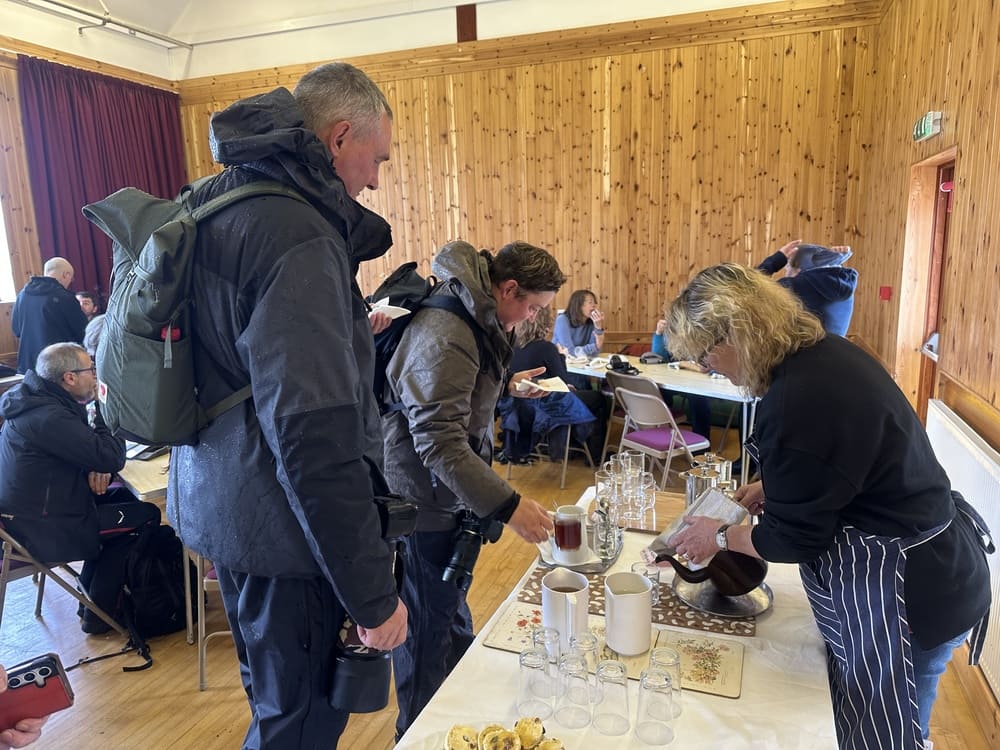
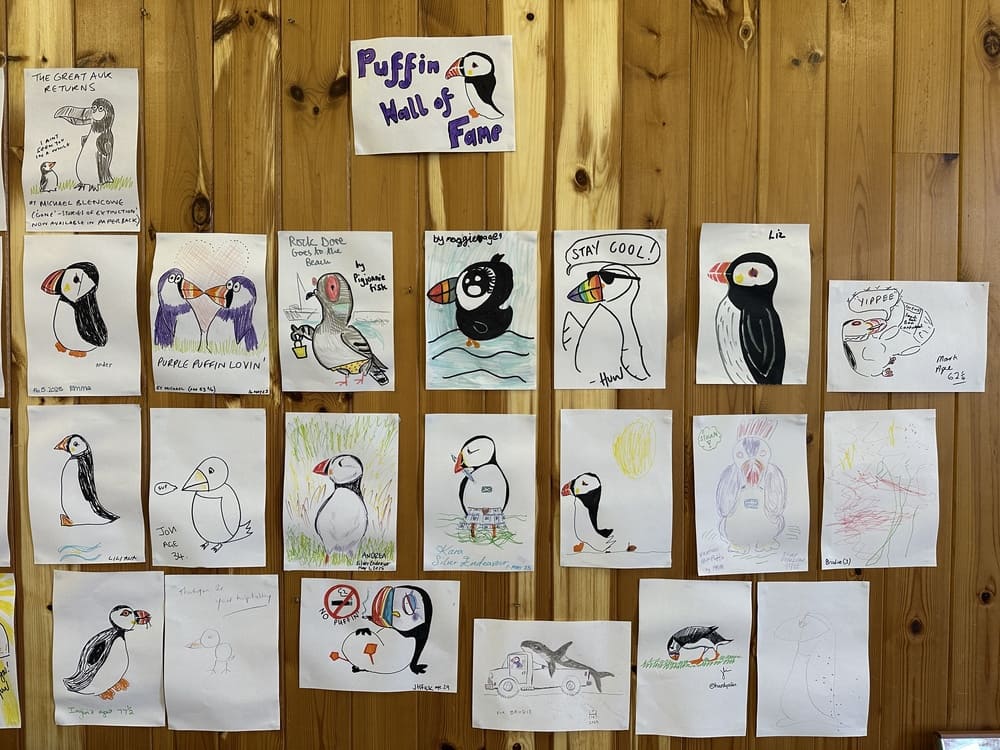
Practical Information
Food: No restaurants or cafés. If you are coming with our cruise ship, a picnic will be provided.
Shopping: There’s a single shop near the harbour. Opening hours are limited and irregular.
Cash/Card: Some places take cards. Bring cash (British pounds) just in case, as there is no ATM.
Connectivity: There is mobile signal throughout the island.
Transport: Walking only. Bring waterproof boots and be prepared for rain at any time.
Weather: Maritime climate. Sudden fog, high winds, and long daylight hours in summer. Come prepared for all conditions. And if you don’t like the weather, just wait 15 minutes!
